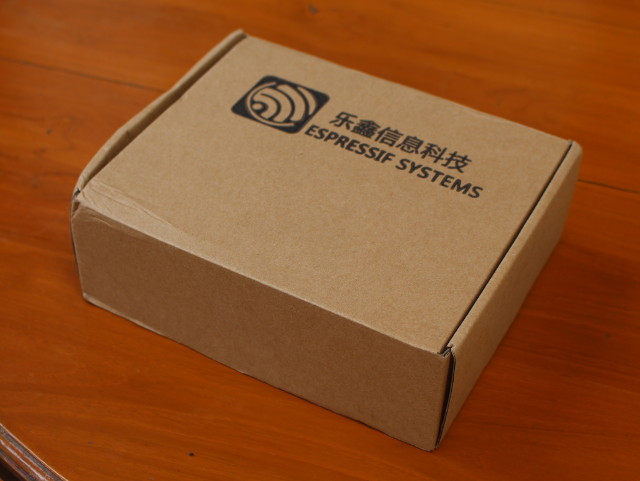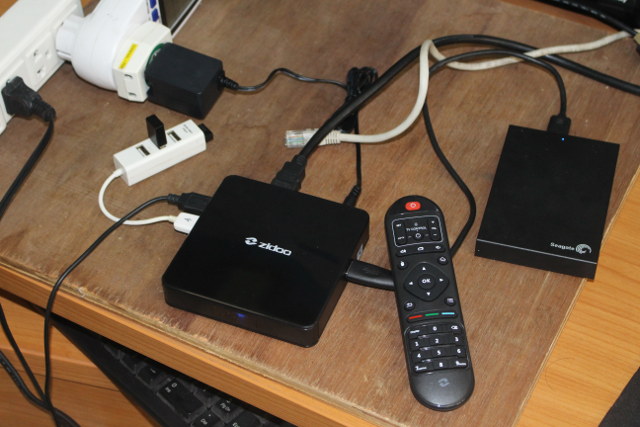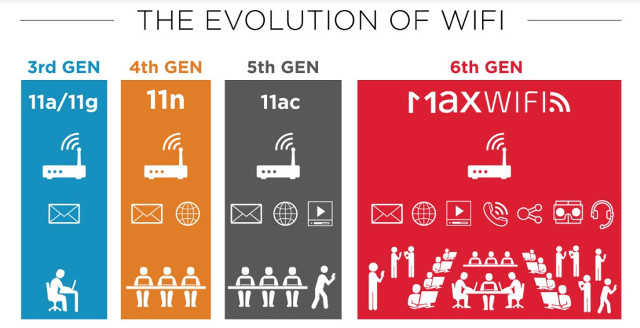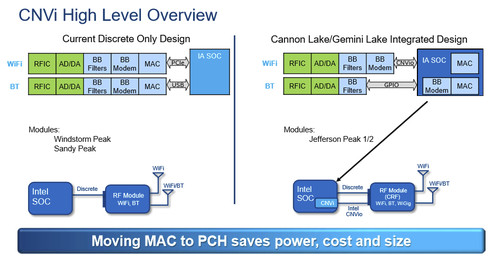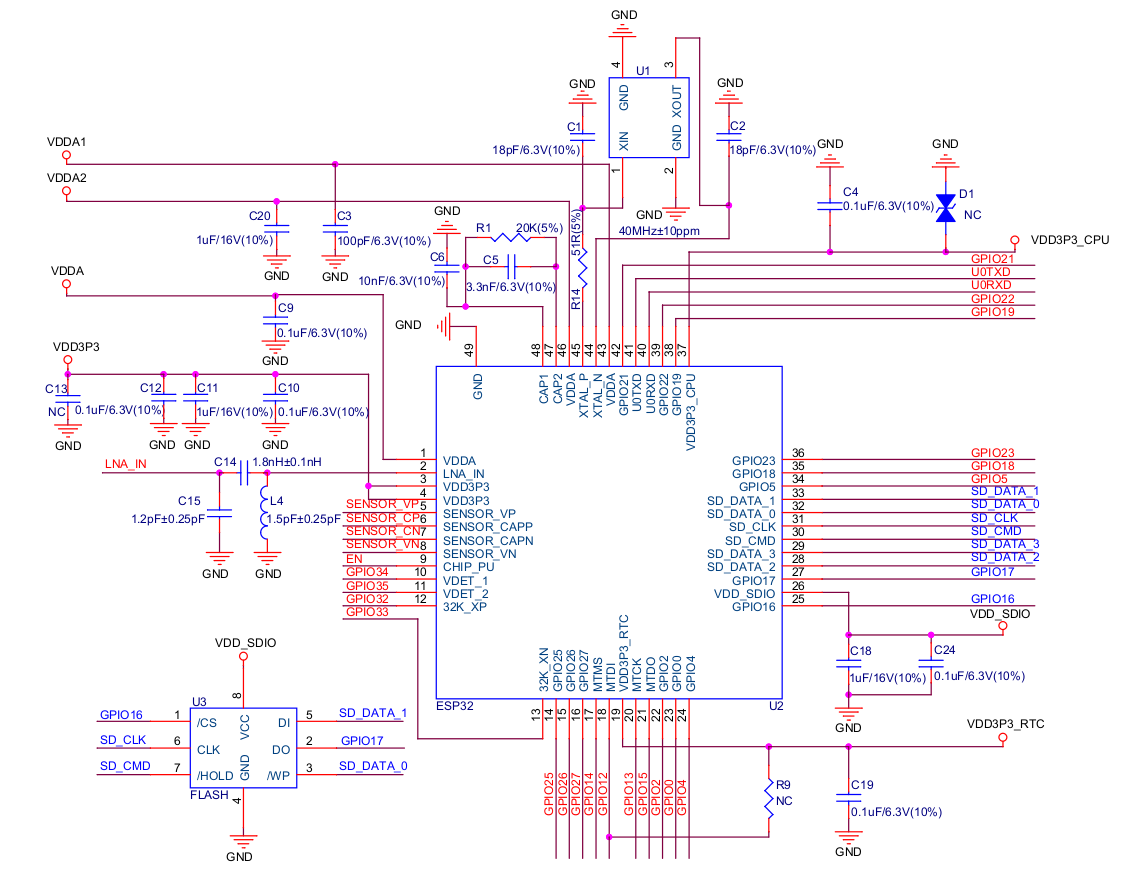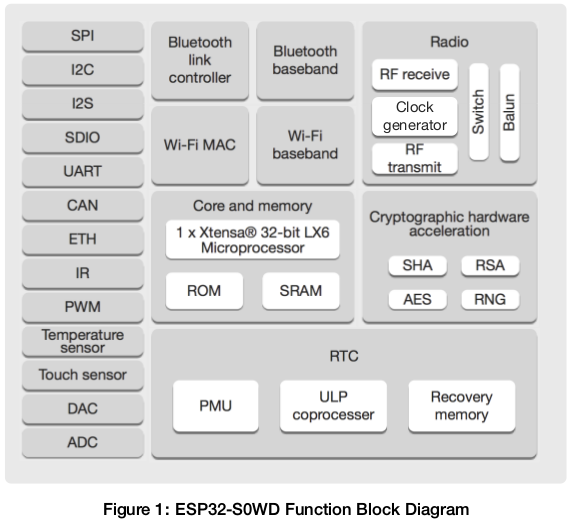Linaro Connect San Francisco 2017 is now taking place until September 29, and it all started yesterday with the Welcome Keynote by George Grey, Linaro CEO discussing the various achievements since the last Linaro Connect in Budapest, and providing an insight to the future work to be done by the organization. The video is available on YouTube (embedded below), and since I watched it, I’ll provide a summary of what was discussed: Welcoming New Members – Kylin (China developed FreeBSD operating systems) joined LEG (Enterprise Group), NXP added LHG (Home Group) membership, and Xilinx joined LITE (IoT and Embedded). Achievements OPTEE open portable trusted environment execution more commonly integrated into products. Details at optee.org. LEG 17.08 ERP release based on Linux 4.12, Debian 8.9 with UEFI, ACPI, DPDK, Bigtop, Hadoop, etc… LITE group has been involved in Zephyr 1.9 release, notably contributing to LwM2M stack More projects to be found […]
A First Look at ESP32 PICO Core Development Board Powered by ESP32-PICO-D4 SiP
Last week, I wrote about ESP32-PICO-D4 system-in-package (SiP) that contains ESP32 WiSoC, 4MP SPI flash, a crystal oscilloscator and some passive components in a single 7×7 mm package in order to allow smaller designs based on ESP32. The company noticed the post, and asked me whether I’d be interested in receiving “some development boards based on ESP32 PICO”, an offer hard to refuse :), and within a couple of days I received the package below. So I ended up with 10 identical development kits, the company probably thought it was no worth paying for DHL to only send one or two development boards… The boards may also be part of some contests… We’ll see 😉 So let’s take two, and have a closer look at “ESP32_PICO_Core_Board_V3″… It comes with two rows of 20 pins with access to all I/Os, and features three main chips: ESP32-PICO-D4 SiP, AMS1117 voltage regulator, and Silabs […]
Zidoo X7 Review – Part 2: Android 7.1 Firmware, ZDMC, WiFi, and More
Zidoo X7 is an Android TV box powered by Rockchip RK3328 processor similar to Bqeel MVR9 with 2GB RAM, but instead of provide Gigabit Ethernet, and 802.11 b/g/n WiFi, it comes with Fast Ethernet, and 802.11 b/g/n/ac WiFi, so is better suited to people using WiFi instead of Ethernet for media streaming. You’ll find plenty of photos in the first part of the review entitled “Zidoo X7 TV Box Review – Part 1: Unboxing & Teardown“, and I’ll report my experience with Android 7.1.2 firmware in this second part. First Boot, Setup, and First Impressions I connected two RF dongles for MINIX NEO A2 Lite air mouse and Tronsmart Mars G01 gamepad via a USB hub, a USB keyboard to take screenshot, and a Seagate USB 3.0 hard drive to the single USB 3.0 port on the box. I perform tests with Ethernet in most reviews, but with Zidoo X7, […]
Embedded Linux Conference & Open Source Summit Europe 2017 Schedule
The Embedded Linux Conference & IoT summit 2017 took place in the US earlier this year in February, but there will soon be a similar event with the Embedded Linux Conference *& Open Source Summit Europe 2017 to take up in Europe on October 23 – 25 in Prague, Czech Republic, and the Linux Foundation has just published the schedule. It’s always useful to find out what is being discussed during such events, even if you are not going to attend, so I went through the different sessions, and compose my own virtual schedule with some of the ones I find the most interesting. Monday, October 23 11:15 – 11:55 – An Introduction to SPI-NOR Subsystem – Vignesh Raghavendra, Texas Instruments India Modern day embedded systems have dedicated SPI controllers to support NOR flashes. They have many hardware level features to increase the ease and efficiency of accessing SPI NOR […]
Broadcom Introduces Three 802.11ax “Max WiFi” Chips: BCM43684, BCM43694 & BCM4375
We’ve already written about the new 802.11ax WiFi standard that promises up to 10 Gbps data rates, support for 2.4 & 5 GHz bands, up to 4x longer range, and better handling of high density scenarios. It appears 802.11ax we’ll be known as Max WiFi to the masses, and Broadcom has unveiled Max WiFi solutions for home and enterprise routers, as well as a smartphones. There are currently three Max WiFi solutions from Broadcom: BCM43684 & BCM43694 4×4 802.11ax chips, respectively optimized for residential and enterprise access points, share the same key features: Support for four streams of 802.11ax 4.8 Gbps PHY rate 160 MHz channel bandwidth 1024 QAM modulation Uplink & downlink OFDMA (Orthogonal Frequency Division Multiple Access) MU-MIMO ZeroWait DFS (Dynamic Frequency Selection) AirIQ interference identification Full compliance to IEEE and WFA 802.11ax specifications BCM4375 smartphone combo chip: Support for 2-streams of 802.11ax Bluetooth 5 including Low-Energy Long […]
Intel Wireless-AC 9560 CRF Module Adds 802.11ac WiFi and Bluetooth 5 to Gemini Lake/Cannon Lake Processors
Last week, we saw that the upcoming Intel Gemini Lake processors integrated a CNVi (Connectivity Integration) block with a WiFi MAC, and Bluetooth MAC & Baseband Modem connected over a CNVio interface to a separate CRF (Companion RF) module handling the RF part. The design change is shown in the block diagram below with the old design on the left using wireless modules connected over PCIe and USB, and the new design on the right used in Cannon Lake/Gemini Lake processors which aims at saving power, cost, and size. Intel has now uploaded the product brief for their first wireless CRF module: Intel Wireless-AC 9560 with the following key features: Connectivity WiFi Dual band 802.11 a/b/g/n/ac wave 2 2×2 WiFi up to 1.73 Gbps using 160 MHz channels Standards – IEEE 802.11a/b/g/n/ac, 802.11d, 802.11e, 802.11h, 802.11i, 802.11w, 802.11r, 802.11k, 802.11v pending OS support Security WPA and WPA2, 802.1X (EAP-TLS, TTLS, […]
ESP32-PICO-D4 System-in-Package Combines ESP32, 4MB SPI Flash, a Crystal Oscillator, and Passive Components
Espressif Systems has revealed another ESP32 variant, but this time it’s not an SoC, but a 7x7mm system-in-package (SIP) that comes ESP32 dual core processor, a 4MB SPI flash, a crystal oscillator and various passive components, so that you don’t need to include those in your design, and create an ultra-compact PCB for wearables and other space-constrained applications. ESP32-PICO-D4 SiP specifications: SoC – ESP32 with two Tensilica LX6 cores, 448 KB ROM, 520 KB SRAM (inc. 8KB RTC memory), 1kbit eFuse On-module Flash – 4MB SPI flash Connectivity WiFi – 802.11 b/g/n/e/i (802.11n up to 150 Mbps) Bluetooth – Bluetooth V4.2 BR/EDR and BLE specification; ; class-1, class-2 and class-3 transmitter; Audio: CVSD and SBC SIP Interfaces SD card, UART, SPI, SDIO, LED PWM, Motor PWM, I2S, I2C, IR GPIO, capacitive touch sensor, ADC, DAC, LNA pre-amplifier Sensors – On-chip Hall sensor & temperature sensor Clock – On-module 40 MHz crystal […]
Single Core ESP32-S0WD WiSoC Datasheet and Price
I’m subscribed to Espressif Systems’ notification system so that I received an email each time there’s a documentation update on their website, and this morning they posted ESP32-S0WD Datasheet, the single core version of ESP32 processor, which we reported in our post about ESP32 5×5 packages. Beside the small 5x5mm 48-pin package, and single Xtensa 32-bit LX6 microprocessor, it looks to be the same as the frequently used ESP32-D0WDQ6 with a 6x6mm 48-pin package. The CPU & Memory part of the datasheet reads: ESP32-S0WD: Xtensa single–core 32-bit LX6 microprocessor, up to 200 DMIPS 448 KB ROM 520 KB SRAM 16 KB SRAM in RTC QSPI flash/SRAM, up to 4 x 16 MB Power supply: 2.3V to 3.6V While ESP32 datasheet shows a dual core up to 600 MIPS, so maybe the max frequency is also limited. I could not find any ESP32-S0WD module or board just yet, but GridConnect is […]



